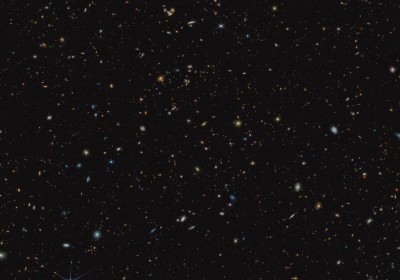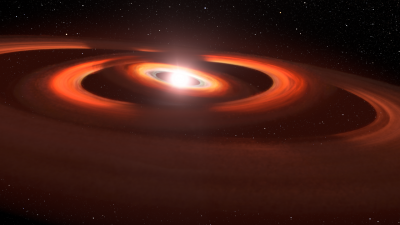Hubble Sees Evaporating Planet Getting the Hiccups
Space Telescope Science Institute (STScI)A young planet whirling around a petulant red dwarf star is changing in unpredictable ways orbit-by-orbit. It is so close to its parent star that it experiences a consistent, torrential blast of energy, which evaporates its hydrogen atmosphere — causing it to puff off the planet. But during one orbit observed with Hubble, the planet looked like it wasn't losing any material at all, while an orbit observed with Hubble a year and a half later showed clear signs of atmospheric loss.















